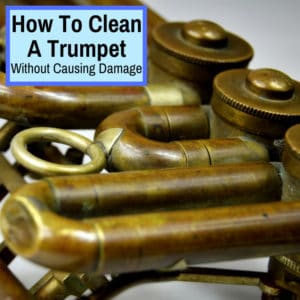
A trumpet that gets played, gets dirty, so they need to be cleaned regularly. Luckily, it’s a fairly easy process.
Unfortunately, it’s also a bit time consuming.
I would recommend cleaning the mouthpiece at least weekly and cleaning the entire trumpet once a month.
Following these instructions will help you clean the whole instrument as efficiently as possible.
But before we being, let’s define a few terms we will use.
Table of Contents
Cleaning A Trumpet: Components You Need To Know
Before we get into the cleaning of of the trumpet, we need to know the different parts of the instrument.
Bore
The bore of the trumpet, or any wind instrument, refers to the interior chamber. It defines the air flow path through the instrument and its shape is what determines, in large part, the sound of the instrument.
Lead pipe
The lead pipe is the piece that connects the mouthpiece and the tuning slide.
Bell
The bell is part of the horn. Basically, it is the conical side of your trumpet.
Valve casings
The valve casings are the chambers that contain the valve pistons. They are also a part of the horn.
How To Clean A Trumpet
Before you start cleaning your instrument, you want to gather all the materials you will need. Getting everything together beforehand saves time, because you won’t find yourself having to interrupt the cleaning process to search for an item. Here are the basic items you will need.
Items You Will Need
- Bucket or bathtub
- 2 Large towels
- Wash cloth
- Polishing cloth
- Dish soap
- Brushes (including a wire snake brush) – this kit is a great choice
- Slide grease – this one is good
- Valve oil – this article reviews the best trumpet valve oils on the market
Disassemble The Instrument
In order to properly clean the trumpet, you need to first disassemble it. Lay down a towel and place all the trumpet parts on it. Ensure that the towel is clean. Do not just place the parts on the hard ground or a rough surface. It is too easy to scratch something or cause even worse damage.
Pay attention when taking the trumpet apart, so that you know how to put everything back together again after you are done cleaning. You also want to make sure you don’t lose any parts. Keep any part you are not cleaning on the towel at all times.
Once everything is disassembled, you should have the following parts.
- Mouthpiece
- Three piston valves
- Three valve slides
- Turning slide
- Three valve caps
- Horn
There may be a few other items like screws. Make sure to keep them with the parts to be cleaned, to avoid misplacing them.
Fill The Tub (Or Bucket) With Water
I usually let the tub fill, while I’m disassembling the trumpet. You want to use lukewarm water. Hot water can damage the finishing and cold water simply does not clean as effectively.
Were you wondering why I recommended two towels in the item list above?
Well, it is a good idea to line the bottom of the tub with the second towel, to prevent any damage to the delicate parts. Once you have a towel-lined tub full of lukewarm water, you can start transferring the parts into the tub. It is a good idea to let them soak for twenty minutes or so before cleaning.
Cleaning The Trumpet
The exterior of the trumpet can be cleaned with a washcloth, but make sure it is soft (cotton works well) and does not leave scratches. For other parts, pipe cleaners and brushes are ideal.
Focus most on the valve casings and especially the mouth piece. This is where most of the bacteria accumulates. Any parts close to the mouthpiece should receive extra care as well.
Let’s go over some of the individual parts.
Clean The Tuning Slide
Use a wire snake brush and a bit of dish soap to clean down the interior of the bore. Take care not to get the brush stuck due to the curvature of the bore. After you have cleaned the interior, carefully wash the exterior of the slide with the washcloth.
Clean The Valve Slides
There are three valve slides to clean, appropriately named the first valve slide, the second valve slide and the third valve slide.
Cleaning them is basically the same as cleaning the tuning slide. Use the wire snake brush with some dish soap to eliminate residue from the inside then clean the outside with the washcloth.
Clean The Caps
The caps require a bit of extra attention due to the oil residue that accumulates in them. Again, use soap and the wire brush to clean the caps. Some people will use the mouthpiece brush that comes with the trumpet to clean the caps. Do not do this.
Clean The Horn
Use the wire brush and soap to scrub every opening in the horn. Spend a bit of extra time on the lead pipe. DO NOT run the wire brush into the valve casings. Use a special valve casing brush instead, to avoid any damage. Clean the exterior of the horn with the washcloth.
Clean The Mouthpiece
Use the mouthpiece brush that comes with any trumpet to clean the mouthpiece. Be gentle and don’t just jam the brush deep inside the mouthpiece. Scrub the mouthpiece thoroughly from all sides. We have an entire article on how to clean a trumpet mouthpiece with more information.
Rinse All The Parts
Once you have cleaned all the parts, rinse them well in clean running water. Put the pieces back on the first towel to let them air dry. It is best to not use a blow dryer, even though it is faster.
If you’ve got a spot in the sun, you can place everything there to speed up the drying process. Make sure all parts have dried completely before reassembling, especially the valves.
Reassemble The Pieces
Before putting everything back together, apply some slide grease to all the slides and a few drops of valve oil to the valves. Do not force any parts back together. If they do not go into place with gentle pressure, there is a reason. Using more force will only damage them.
If you can’t remember how to put the trumpet back together (this can happen, especially the first time you clean it), either get a specialist to do it for you or consult this diagram. It should help you figure out where everything goes. The following video is great, too.
I know this is a bit of a time-consuming task, but it is necessary to keep your instrument in top playing shape, no matter which type of trumpet you play. As mentioned above, once a month will suffice for a complete cleaning like this, as long as you clean the mouthpiece more often. Once a week is good for that.
How To Wash A Trumpet: Related Questions
Next, we will go over some common questions related to cleaning your trumpet. If you have any additional questions, please feel free to ask them in the comments below.
How Do You Properly Wash A Trumpet?
Use lukewarm water, not hot water, as it could damage your instrument’s finish. Add a few drops of dish soap to the water.
Soak the slides in the water for a few minutes, then clean the insides with a cleaning snake. Then do the same with the whole trumpet.
Make sure not to dip the whole valves in the water, because you do not want to get the felt pads wet. If they get wet, it inhibits their ability to absorb shocks.
How Often Should A Trumpet Be Cleaned?
The frequency with which you should clean your trumpet depends on how much you play it, of course. Generally speaking, you want to clean it about once every six weeks. Do it more often if you are a heavy user.
Can I Use Vaseline On My Trumpet Slides?
Some people will tell you never to use Vaseline as a substitute for slide grease, because it can corrode the instrument. However, many people successfully use it and they have no issues. I would recommend always using slide grease, and only using Vaseline as a last resort.
How Much Does It Cost To Clean A Trumpet?
Getting your trumpet professionally cleaned generally costs $75 to $150, if it is done thoroughly. It may be worth it do have it done by a professional occasionally, but most of the time, I recommend doing it yourself.
How To Clean Trumpet: Final Thoughts
Many trumpeters have their instruments professionally cleaned, but the costs for that can add up. If you know what you are doing, you can easily clean your trumpet at home.
And hopefully, you now know what you are doing. You might have to buy some trumpet cleaning supplies, but those are mostly a one-time expense. You buy them once and use them for many, many cleanings.
Apart from that expense, the only other cost is time. The first time you clean your trumpet might go slow, but once you get the hang of it, you will be able to clean the entire trumpet fairly quickly.
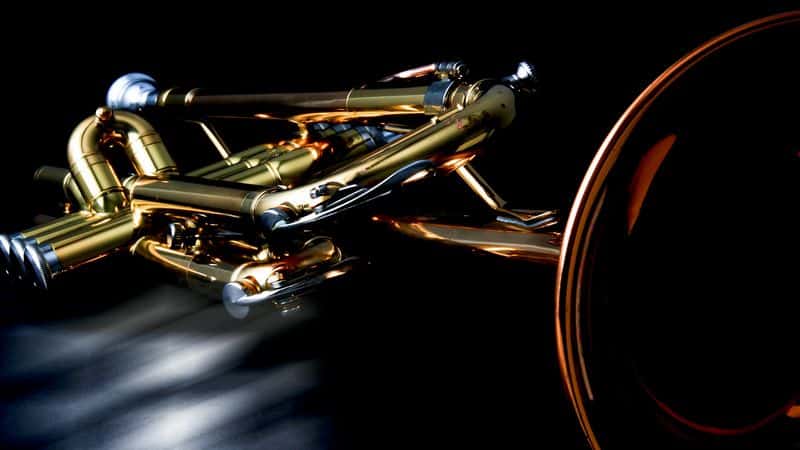
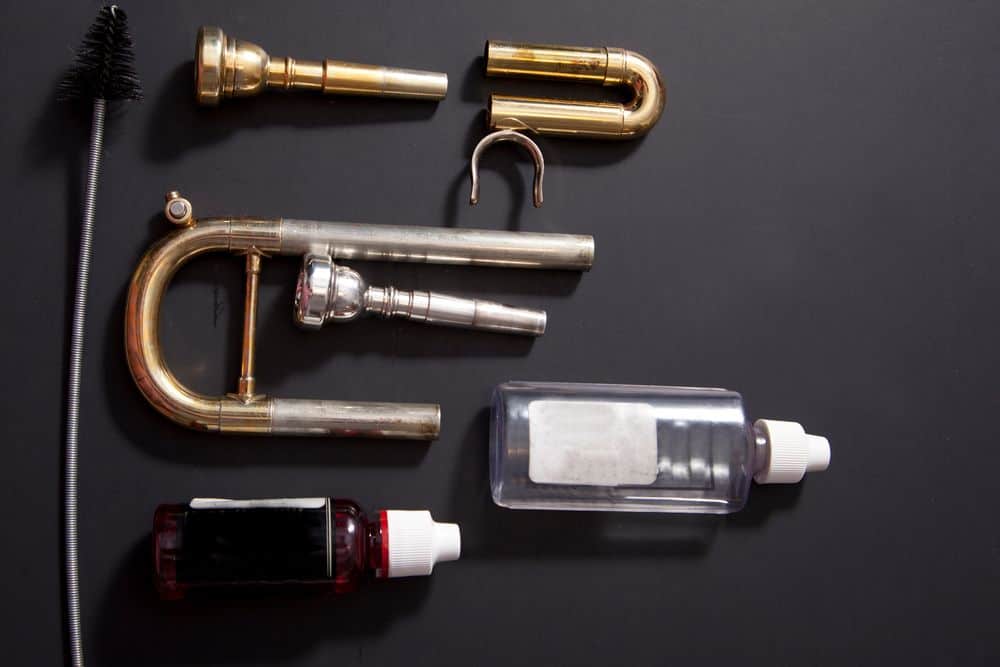
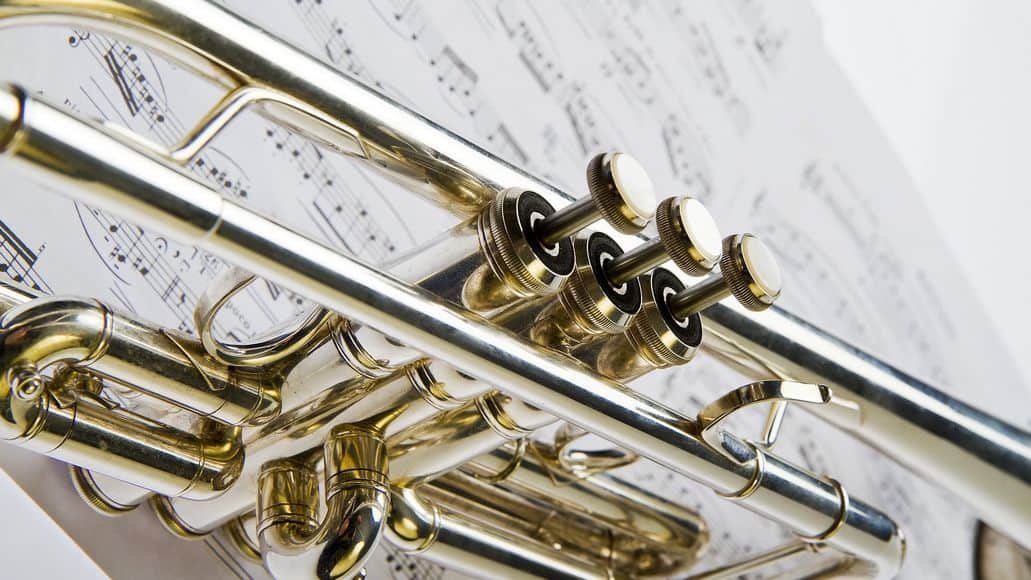
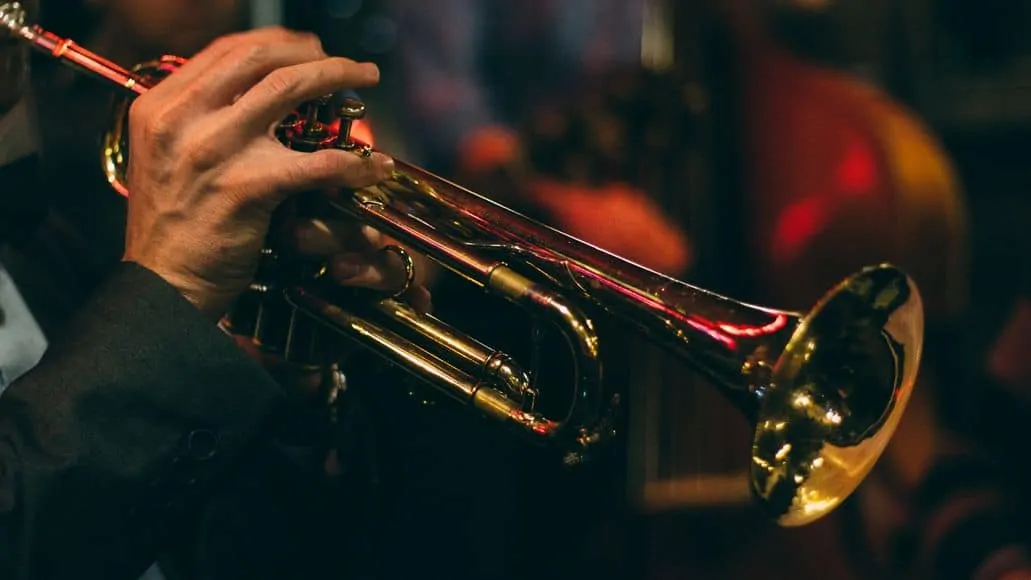


Just FYI, the picture you have at the top of the article, captioned “This trumpet needs a cleaning,” is not a trumpet. It looks like a baritone/euphonium.
I know, but I couldn’t find a photo of a really dirty trumpet. You make a good point, though. I went ahead and changed the caption, so people don’t think I’m a complete idiot.
Perfect!!